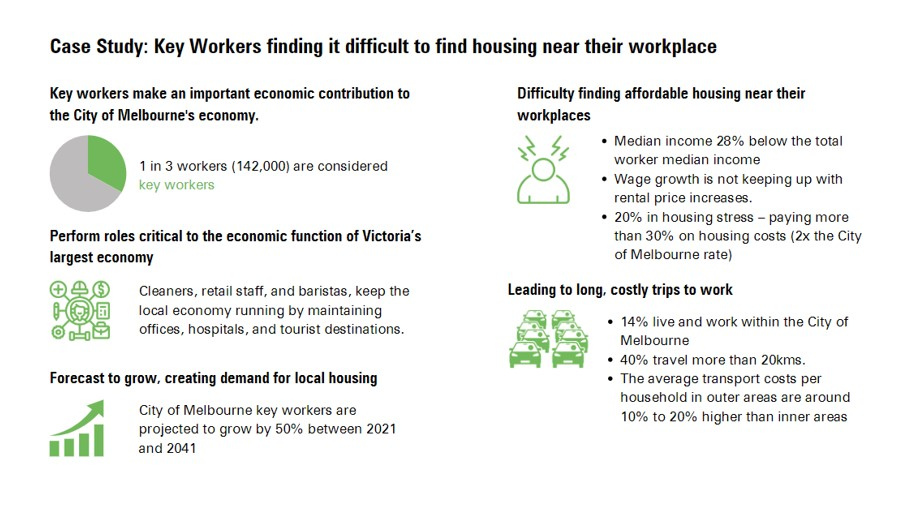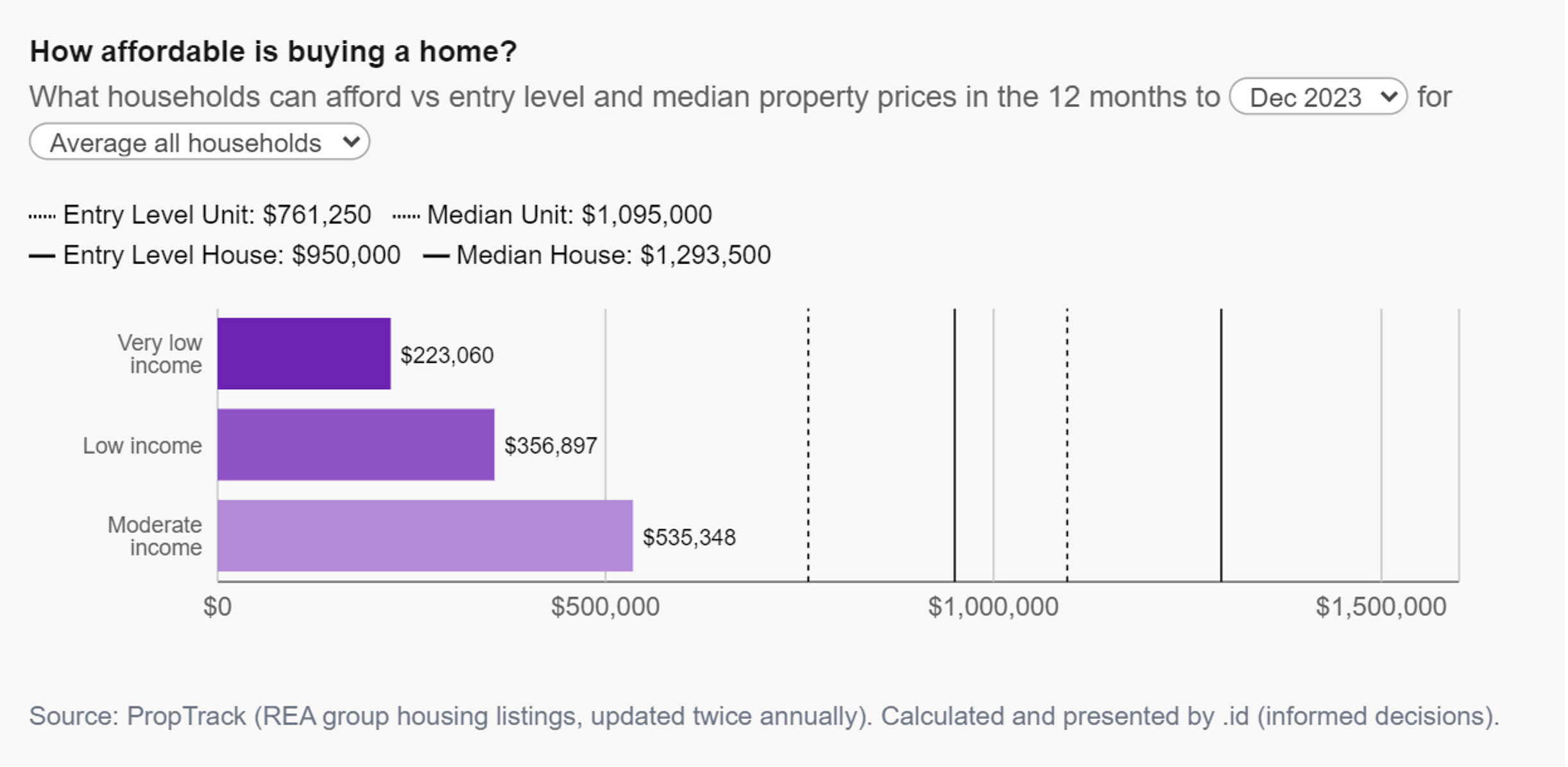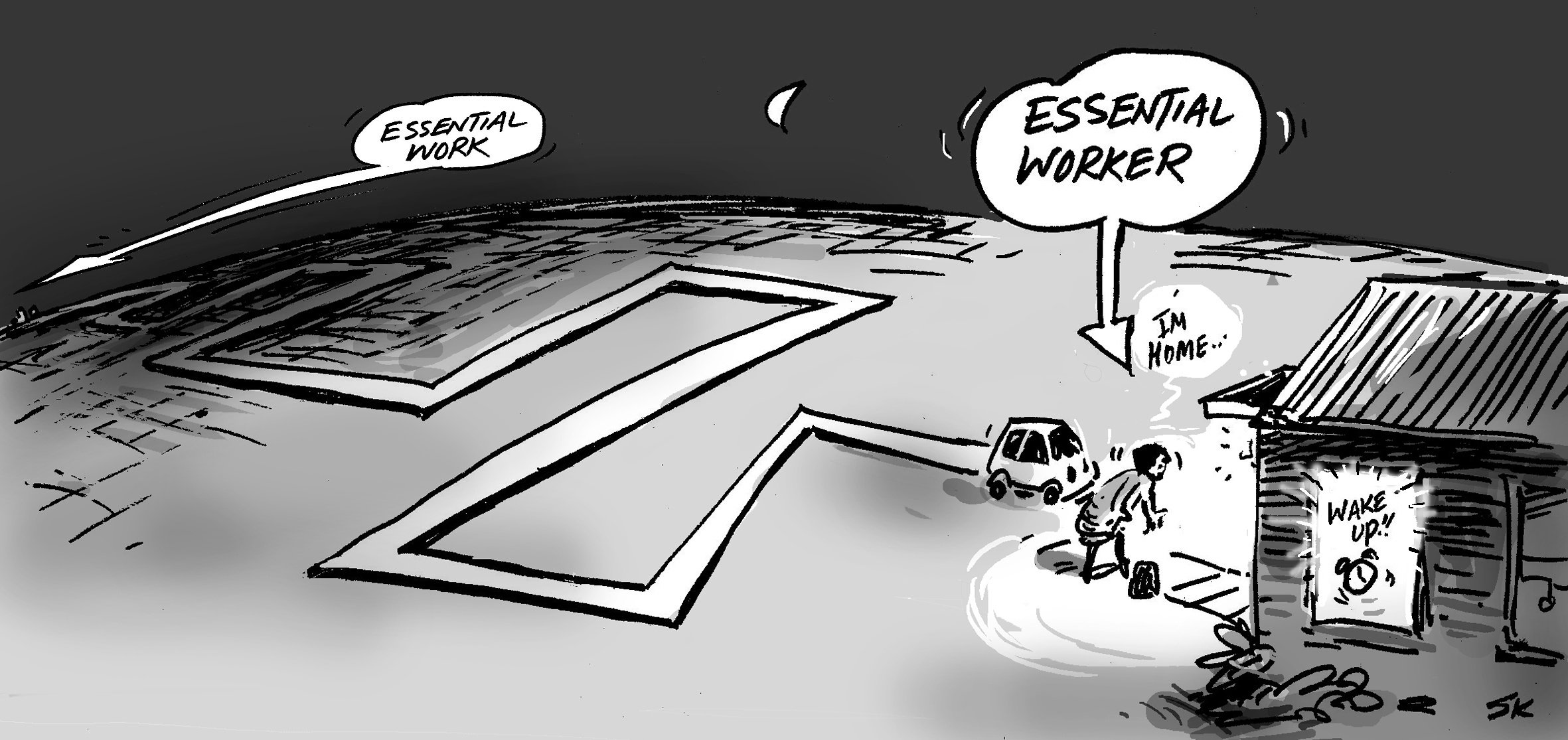The federal government recently shared their view of the national economic outlook for the next financial year. This broad picture of the expected economic conditions is a critical driver of government spending. The national economic outlook also guides state and local governments, as well private sector organisations, as they make decisions about where to invest resources. In this article .id Chief Economist, Rob Hall, looks at two ‘hot topics’ for Australia’s economic outlook – unemployment and housing affordability - and explores how national level trends translate into local realities.
The federal government recently shared their view of the national economic outlook for the next financial year. This broad picture of the expected economic conditions is a critical driver of government spending.
The national economic outlook also guides state and local governments, as well private sector organisations, as they make decisions about where to invest resources. The challenge, however, is that these headline economic conditions will translate into different realities for local communities based on the interplay of a wide variety of factors. Macro level interventions, like cost-of-living relief measures, will not deliver the same impact in all places.
At the same time, it can be hard for place-based organisations to make informed decisions based on such high-level economic data. To bring about real improvements to people’s living standards, macro interventions need to be complemented by local level initiatives guided by an understanding of what is really happening in each local economy.
In this article we will look at two ‘hot topics’ for Australia’s economic outlook – unemployment and housing affordability - and explore how national level trends translate into local realities.
Unemployment
Nationally, unemployment is expected to increase from 3.8% to 4.5% over the next twelve months.
But unemployment rates vary widely from place to place. Jobs and Skills Australia data shows that nearly 225 Local Government Areas (LGAs) across Australia are already experiencing unemployment rates of less than 3%.
Unemployment rates vary greatly between LGAs across Australia, as well as within individual states, regions and capital cities.
The unemployment rate is currently very low within cities. Stronger population growth in metropolitan areas helps fuel demand for products and services, which bolsters employment. But there are also pockets of high unemployment in capital cities, even when national unemployment rates are low. For example, Playford in Adelaide and Fairfield in Sydney have unemployment rates of 8.6% and 7.5%, respectively. Fairfield faces complex issues with their population more likely to be born overseas, many from refugee backgrounds and many live in social housing. Playford provides an example of the ongoing transition from manufacturing to services – back in 2001, 29% of jobs were in manufacturing, it is now 5%.
This disparity is also seen in regional Australia. Many remote communities have unemployment rates of more than 10%, creating cycles of inequality. And yet in some regional areas there are critical worker shortages, leading to unemployment rates of less than 3%. This worker shortage challenge is further amplified by the fact that major capital cities, not regional areas, tend to benefit most from the influx of overseas migrants.
But unemployment rates don’t tell the full story. Lismore's unemployment rate of 3.9% in December 2024 might seem positive. However, the rebuilding efforts following the devastating 2022 floods present unique challenges. These challenges, including higher insurance premiums, elevated reconstruction costs, and population loss, could hinder a full economic recovery and contribute to the unemployment rate not reflecting the true health of the local economy.
And while the federal – and state- governments can influence some economic levers at a national level, places like Lismore, Fairfield, Playford and remote communities will benefit more from targeted local action that address their specific economic challenges.
id. provides in-depth and up-to-date economic insights for local areas through our economy.id platform. Using our State of the Regions dataset we can understand key economic indicators beyond just unemployment, providing an evidence base for designing target local initiatives.
Housing affordability
Let's turn to another critical issue facing our communities - housing affordability. While the recent budget includes measures that aim to boost housing supply, their own predictions still show a housing shortage that will continue to worsen until 2027. This is a tough reality for residents struggling to find a place they can afford, even with the cost-of-living relief.
But the problem goes beyond simply building more houses. Location matters. Coordination matters. This lack of housing supply impacts our entire economy – but it impacts different places in different ways depending on the interplay of factors like demographic profile of households, transport infrastructure, and geography.
In our cities, the lack of affordable housing near job concentrations is hindering productivity and growth. In regional areas, inadequate housing supply is adding to skill shortages, making it difficult for businesses to attract the workers they need. Local government and place-based organisations looking to address these issues need to understand the specific economic factors at play that are driving the unique circumstances for each place.
Take the City of Melbourne for example. They have a very high concentration of key workers – nurses, carers, childcare workers, teachers, cleaners – who are crucial to people’s daily lives. In fact one third of the workforce are considered key workers. But rising housing costs in inner city areas combined with their lower incomes are making it increasingly difficult for them to live near their jobs.
Our research shows that 20% of these key workers experience housing stress, meaning a significant portion of their income goes towards rent. Additionally, 40% face long commutes, which increases transport costs. These long commutes disproportionately impact women, because they continue to take on more unpaid caring responsibilities, limiting the hours they can work.
This spatial mismatch between jobs and housing isn't just a Melbourne problem – it's a challenge for all major Australian cities, including Sydney and Brisbane. Tackling this mismatch is crucial to unlocking the full potential of our urban economies and boosting productivity.

The mismatch between where people live and where they work is a drag on urban productivity for the City of Melbourne
Regional areas share the concern of housing affordability, but face a different challenge. While once a strength, pre-pandemic affordability has become a major barrier. Limited rental options and high housing costs in many regional areas now make it difficult to attract both skilled migrants and workers from cities. This is crucial, as our forecasts show regional areas are less likely to attract overseas talent.
Take Noosa for example. In Noosa (a coastal city north of Brisbane) only 2.4% of recent housing sales are affordable for someone earning the median income. This makes it difficult to attract and retain young workers, who are crucial for filling job vacancies. As a result, the population is ageing, leading to potential long-term worker shortages - especially in critical areas like care work. This has ripple effects across the economy and community.

High house prices in Noosa limit the opportunity to attract or retain younger workers which creates challenges for workforce growth
The key story here is that the national outlook for housing supply is only one part of the picture. We do need to understand how many new dwellings will be built, and if that will be enough to house our growing population. But we also need to also understand the diversity of housing options and the supply of well-located housing for each place. The combination of how many, what type and where houses are available impact the attractiveness of a place and quality of life for residents, with ripple effects across the economy and community.
.id’s Housing Monitor (housing.id) helps local governments and place-based organisations understand all of this for their specific location - housing supply and demand, diversity of dwelling types, affordability and availability. The data can be access via our housing.id platform for you to undertake your own analysis, or we can provide bespoke consulting and analysis services tailored to your specific housing challenge.
Closing remarks
Our national economic outlook provides decision makers with an indication of the overall economic health of our nation, identifying areas of strength and concern that might drive government action.
But at the local level many factors influence how those national trends translate on the ground. Some of these factors include population growth, industry mix, qualification levels, job deficits, housing types, impact of natural disasters and government investment.
Local responses to economic challenges need to understand how these factors are influencing the economy and community, so they can plan targeted initiatives that are more likely to be effective.
Translating national trends into local stories is at the core of what we do at id. We provide location specific data to support place-based planning through a range of datasets, platforms and services.
If you interested in understanding more about the economic outlook for your place, register your interest for our upcoming 2024 State of the Regions webinars or get in contact with our team to speak with one of our consultants.











